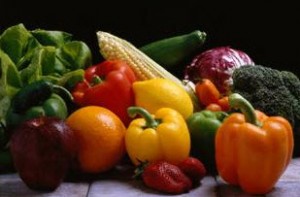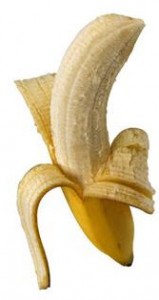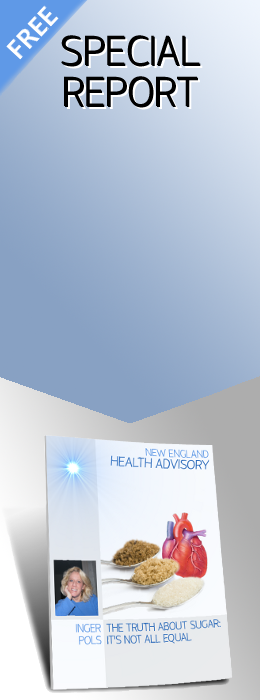 Getting the right info on buying the best fruits and vegetables is as important as ever, so I want to answer some of the questions people ask me regularly about making healthy fruit and vegetable choices, such as: when is it worth splurging on organic if my budget is tight? Is frozen better than canned? Do I need to wash everything, even if it has a skin? And, how do I decide between local and organic?
Getting the right info on buying the best fruits and vegetables is as important as ever, so I want to answer some of the questions people ask me regularly about making healthy fruit and vegetable choices, such as: when is it worth splurging on organic if my budget is tight? Is frozen better than canned? Do I need to wash everything, even if it has a skin? And, how do I decide between local and organic?
I’m going to begin by telling you which fruits and vegetables are the safest, and which are the most pesticide-ridden, so that you can start making better choices immediately.
The Dirty Dozen
Several years ago, Consumer Reports magazine assessed the pesticide residue levels in fruits and vegetables based on data from the USDA, with foods prepared as they would be in a typical home.
The score was a composite that was based on how many samples contained pesticides, the average amount and the toxicity of the particular pesticides that were found. In this report, a result over 100 indicated cause for concern. Peaches domestically grown in North America came in at 4,848. Winter squash (domestically grown) came in at 1,706. Domestic apples landed at 550. Domestic pears, spinach, grapes, celery, green beans, grapes from Chile and spinach from Mexico all fell in the 250-450 range.
With anything over 100 being cause for concern, this study illustrates why people are so worried about pesticides in our produce supply and why it is worth spending more for organic.
Organic foods will rarely be completely pesticide-free; they still have some trace levels of pesticides due to contaminants that remain in the soil or are airborne. However, studies have shown that people who consume conventional fruits and vegetables have pesticide residues in their urine and those who consume organic fruits and vegetables do not.
In today’s economy, money can be tight and we are all looking to stretch wherever we can; but spending a little more to buy organic can be a wise investment in your health. If you cannot afford to buy everything organic, but you still want to make some healthier food choices, here are the 12 fruits and vegetables that are worth splurging for organic. According to the Environmental Working Group, these fruits and vegetables contain between 47-67 pesticides per serving (which cannot be washed away).
In order (from worst to somewhat better, keeping in mind all 12 of these should be avoided to the extent possible if they are not organic), they are:
- Celery
- Peaches
- Strawberries
- Apples
- Domestic blueberries
- Nectarines
- Sweet Bell Peppers
- Spinach, kale and collard greens
- Cherries
- Potatoes
- Imported Grapes
- Lettuce
If your five+ servings a day of fruits and vegetables are coming primarily from these foods, you are taking in high levels of pesticides that are linked to autoimmune disorders, cancer and ADHD. (And I suspect many other conditions that studies have not yet revealed because of lack of funding for such research.)
We can handle a little bit of pesticides from time to time, but if you are eating other foods that contain toxins or consuming a lot of fructose or drinking a lot of alcohol, your liver is already busier than it should be and it isn’t fully available to detoxify your chemical load.
If you eat from this group regularly, over time you will add significantly to your toxic load; you need to consider not only the effect of these foods, but also the effect of these foods in conjunction with the other things you are eating and doing (or not doing). Children, pregnant women and those with compromised immune systems need to be especially vigilant. It’s estimated you can avoid as much as 80% of your pesticide exposure by choosing organic forms of these fruits and vegetables.
The Clean 15
It may not be that helpful to assess the rest of the fruits and vegetables because your primary focus should be on avoiding non-organic forms of the produce above. But it often surprises people to know some of the cleanest, least pesticide-ridden produce.
In order, from best to not as good, but still pretty clean, they are:
- Onions
- Avocados
- Sweet corn
- Pineapples
- Mango
- Sweet peas
- Asparagus
- Kiwi fruit
- Cabbage
- Eggplant
- Cantaloupe
- Watermelon
- Grapefruit
- Sweet potatoes
- Sweet onions
While we might like to eat only organic fruits and vegetables because they are healthier and often they taste better, if you are watching your pennies, there is no reason to splurge on organic forms of these.
It’s important to note that pesticide residue levels are measured after produce is washed and peeled. So no matter what you are buying, even the clean 15, you should clean your produce with a good veggie wash. You can find citrus-based veggie washes in your grocery produce aisle: water is not usually enough. I wash everything that comes into my house, even if it says it has already been washed. And peeling soft skinned fruits will help reduce pesticide levels as well.
The fruits and vegetables that do not appear on either list are just that: not the best, but not the worst. You’ll want to weigh the conventional versus organic options in light of what else you eat and your financial considerations. If you opt to buy conventional instead of organic, always look to buy produce that is as local as possible. If not at a farmer’s market, your local supermarket often has some produce from regional farms and that is always a better choice than food from far away.
Dissecting Food Labels
In addition to the above lists, you also need to be a wise consumer and read produce signs and labels carefully when purchasing fruits and vegetables. Food stores such as Whole Foods and Trader Joe’s have both conventional and organic options, just as your local market may, so you have to be careful about what you are buying: conventional produce from Whole Foods or your local natural foods store is no better than what’s in your local market, and it may be much more expensive.
Some large chain supermarkets (such as Hannaford here in New England) have a wide selection of organic produce that is often cheaper than specialty stores like Whole Foods. Regardless of where you buy, it’s worth reading food labels, as they will tell you the truth.
Conventional produce (grown with herbicides, fungicides, insecticides and fertilizers) will have a sticker that has a four-digit number that begins with a 4. For example, a conventional grown banana might read 4011. Because 4 digit codes have now been used up, you will begin to see stickers will four digit codes beginning with the number 3 that are also conventionally grown.
Organic produce has a five-digit code that starts with the number 9. For example, organically grown bananas might read 94011.
Genetically engineered produce (to be avoided) will have a five-digit product code that starts with the number 8, so a genetically engineered banana would read 84011. (Much produce today has been genetically modified, which won’t be apparent, but if it was specifically genetically engineered, it has to carry a label starting with 8.)
So anytime you are looking to buy organic, just check to make sure the sticker starts with a 9. Supermarket produce sections can be misleading, so double check to make sure you are buying what you really want.
To your wellness and health: your true wealth!
Inger
Author: Inger Pols is the Editor of the New England Health Advisory and Author/Creator, Finally Make It Happen, the proven process to get what you want. Get a free special report on The Truth About Sugar: It’s Not All Equal at www.IngerPols.com
Photo Source: Microsoft Clip Art


 The nutrient value of our foods is declining and the recommendation for fruits and vegetables has been raised from 5 servings a day to 7-13. It’s hard for many of us with busy lifestyles to fit in that much fresh fruit and vegetables, so we have to be creative and look for ways to get more.
The nutrient value of our foods is declining and the recommendation for fruits and vegetables has been raised from 5 servings a day to 7-13. It’s hard for many of us with busy lifestyles to fit in that much fresh fruit and vegetables, so we have to be creative and look for ways to get more. Whenever I talk to people about changing their diets, invariably there are a few foods that they can’t – or won’t — live without. They are not the same for everyone: for some it’s bread or pasta, others it’s an occasional favorite dessert, others it’s coffee or cheese or a glass of wine. And I always tell people that when you deny yourself something that you truly love you will end up eating more in the long run, trying to get that same satisfaction from other things. So enjoy your guilty pleasure (in small doses) and truly savor every bite or sip.
Whenever I talk to people about changing their diets, invariably there are a few foods that they can’t – or won’t — live without. They are not the same for everyone: for some it’s bread or pasta, others it’s an occasional favorite dessert, others it’s coffee or cheese or a glass of wine. And I always tell people that when you deny yourself something that you truly love you will end up eating more in the long run, trying to get that same satisfaction from other things. So enjoy your guilty pleasure (in small doses) and truly savor every bite or sip.
 Follow me on Twitter
Follow me on Twitter 